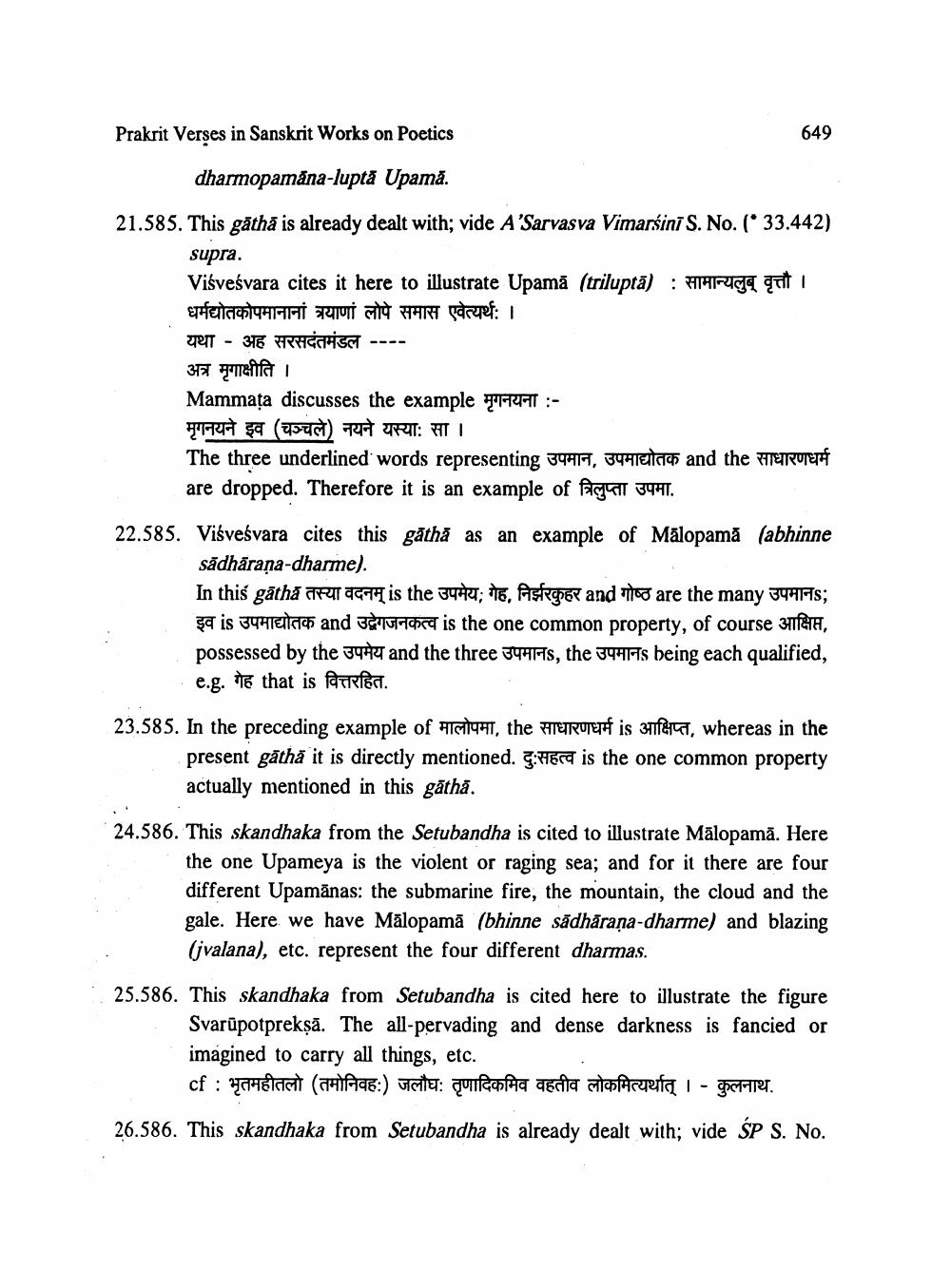________________
Prakrit Verses in Sanskrit Works on Poetics
649
dharmopamåna-luptă Upamā.
21.585. This gātha is already dealt with; vide A'Sarvasva Vimarsini S. No. (* 33.442)
supra. Viśveśvara cites it here to illustrate Upamā (triluptā) : Mrugt ut i धर्मद्योतकोपमानानां त्रयाणां लोपे समास एवेत्यर्थः । SPRIT - 3TE FRUCCHISCI ---- अत्र मृगाक्षीति ।
Mammata discusses the example मृगनयना :H4t go (aut) URI: HT The three underlined words representing उपमान, उपमाद्योतक and the साधारणधर्म are dropped. Therefore it is an example of Flui 34HT.
22.585. Viśveśvara cites this gātha as an example of Mālopamā (abhinne
sādhāraņa-dharme). In this gātha TRITAGE is the 347; T6, Asteget and Moo are the many 34771s; इव is उपमाद्योतक and उद्वेगजनकत्व is the one common property, of course आक्षिप्त, possessed by the उपमेय and the three उपमानs, the उपमानs being each qualified, e.g. To that is fatele.
23.585. In the preceding example of मालोपमा, the साधारणधर्म is आक्षिप्त, whereas in the
present gatha it is directly mentioned. G:Heca is the one common property actually mentioned in this gathā.
24.586. This skandhaka from the Setubandha is cited to illustrate Mālopamā. Here
the one Upameya is the violent or raging sea; and for it there are four different Upamānas: the submarine fire, the mountain, the cloud and the gale. Here we have Mālopamā (bhinne sādhāraṇa-dharme) and blazing (jvalana), etc. represent the four different dharmas.
25.586. This skandhaka from Setubandha is cited here to illustrate the figure
Svarūpotprekṣā. The all-pervading and dense darkness is fancied or imagined to carry all things, etc.
cf : ycetat (Tulado:) vante: quiafia gerta ataforereifa 1 - gitarer. 26.586. This skandhaka from Setubandha is already dealt with; vide ŚP S. No.




